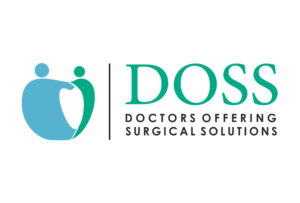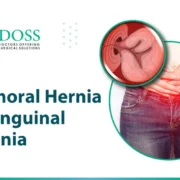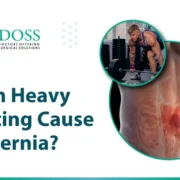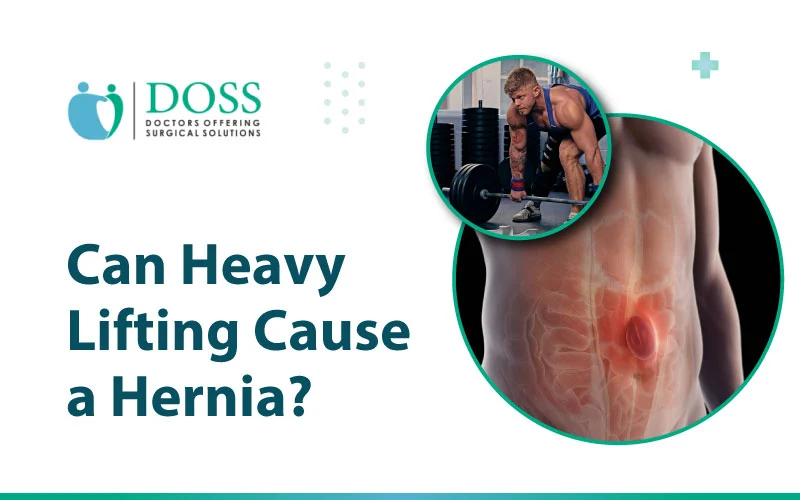What Precautions should we take after Hernia Surgery?
Blog
For those recovering from hernia surgery, following the proper precautions in the weeks after the procedure is crucial to ensuring a smooth recovery process and preventing complications. As many hernia patients know all too well, dealing with this common medical condition can significantly impact your daily life and activities.
While a hernia repair operation provides welcome relief by fixing the underlying weakness or hole in the abdominal wall, it also marks the beginning of a new recovery phase that requires patience and diligent self-care.
This blog post outlines several important precautions doctors recommend taking after hernia surgery to support healing and get back to normal activities as comfortably as possible. By understanding these guidelines, hernia surgery patients can feel empowered and prepared for the road ahead.
Hernia surgery and its common side effects
Hernia surgery, also known as herniorrhaphy or hernioplasty, is a surgical procedure performed to repair a hernia, which is a bulge or protrusion of body tissue or an organ through the structure that normally contains it.
The surgery generally involves the use of a mesh to reinforce the weakened area where the hernia occurred. While it is typically a safe and effective procedure, patients may experience some common side effects post-surgery.
These can include pain or discomfort in the area of the surgery, swelling around the surgical site, and minor changes in bowel movements. Some patients may also experience a feeling of tiredness or fatigue as their body recovers from the operation.
It’s important to note that while these side effects are common, they should lessen over time as the body heals and adjusts post-surgery.
The Significance of Adhering to Post-Surgery Precautions for Swift and Successful Recovery
Following post-surgery precautions meticulously is pivotal to a quick and successful recovery after a hernia operation. These guidelines are designed to minimise any potential risks, such as wound infection or hernia recurrence, and to expedite the healing process.
Adherence to these precautions can help manage common side effects and significantly reduce any discomfort experienced. Furthermore, these precautions often cover essential aspects such as diet, physical activity, and wound care, which when followed diligently, aid the body in regaining strength and function more effectively.
Thus, understanding and following these post-surgery instructions are not only instrumental in fostering a smooth recovery journey but also crucial in preventing potential complications and promoting overall wellbeing post-operation.
Must Read : Demystifying Hernia: Myths and Facts
Proper Wound Care and Hygiene to Prevent Infection
Proper wound care and hygiene practices are crucial to prevent infection after a hernia operation. The surgical site should be kept clean and dry at all times. Here are some essential steps to maintain proper hygiene and care:
- Cleaning the Wound: It’s vital to clean the wound with mild soap and warm water daily. Avoid using any harsh or scented soaps as they can irritate the wound. After washing, gently pat the area dry, don’t rub it.
- Dressing the Wound: If recommended by your healthcare provider, apply a sterile dressing to the wound. Be sure to change this dressing regularly, particularly if it becomes wet or dirty.
- Monitor for Signs of Infection: Keep a close eye on the wound for any signs of infection, such as redness, increased pain, swelling, or a foul-smelling discharge. If you notice any of these signs, contact your healthcare provider immediately.
- Avoiding Unnecessary Touching: Avoid touching the wound unnecessarily. Make sure your hands are clean if you need to touch the wound or change the dressing.
By adhering to these procedures, you can help prevent infections and promote faster healing of the wound post-operation.
Recognising Signs of Complications Post-Operation
Post-operative complications can impede the healing process and if left unaddressed, may lead to serious health consequences. It’s therefore imperative to be vigilant for potential signs of complications such as:
- Fever: An elevated body temperature can often indicate an infection. If you experience a persistent fever higher than 38°C (100.4°F), it’s important to seek medical attention promptly.
- Excessive Pain: While some level of discomfort is expected after surgery, excessive or escalating pain can be a warning sign of complications such as infection or internal bleeding. Do not dismiss persistent, severe pain, and consult your healthcare provider immediately.
- Redness around the Incision Area: While a slight redness immediately after surgery can be normal, an expanding red area around the wound, particularly if it’s accompanied by pain, heat or swelling, should raise concerns about an infection.
Always remember, swift action in response to these warning signs can make a significant difference in your recovery. If you experience any of these symptoms post-operation, contact your healthcare provider without delay.
Must Read : Hernia Complications : When to Seek Medical Help
Resuming Daily Activities and Returning to Work
Before resuming your daily activities or returning to work post-surgery, it is crucial to consult with your hernia doctor. Each person’s recovery timeline is unique, depending on various factors such as the complexity of the surgery, general health condition, age, and lifestyle.
Your doctor can provide a personalised guideline based on your specific situation, ensuring a safe and effective recovery process. Attempting to return to normal activities or work without professional advice may increase the risk of complications and hinder the healing process.
It is therefore advisable to take proper precautions and follow your doctor’s recommendations diligently.
4 Key tips to faster recovery post hernia operation
- Getting ample rest is a paramount part of the recovery process. It’s essential to tune in to your body’s needs and not rush the healing process. Overexertion can lead to complications and prolong your recovery. During this time, your body uses a lot of energy to heal itself; therefore, rest is not only beneficial but necessary.
- Physical therapy exercises play a significant role in the recovery process. Your doctor may recommend specific exercises intended to strengthen your abdominal muscles. These exercises are crafted to repair the affected area, increase your range of motion, and, importantly, help prevent future hernias.
However, it is crucial to only engage in these exercises under the guidance of a professional to avoid any potential harm. The path to recovery post-surgery is a journey, and these measures will ensure it’s a successful one. - Maintaining a healthy, balanced diet post-surgery is crucial for promoting healing and preventing constipation, which can strain the affected area. Incorporate foods rich in fibre such as whole grains, fresh fruits, vegetables, and legumes into your diet. These foods can ease bowel movements and prevent undue pressure on the surgical site.
- Additionally, staying hydrated by drinking plenty of water will also aid in digestion. Protein-rich foods like lean meats, dairy, and legumes are critical for repairing tissues and speeding up recovery. Always remember, while a healthy diet is beneficial for your recovery, it’s important to consult with your doctor or a nutritionist to ensure the diet plan suits your specific health requirements.
- Following surgical intervention, it’s crucial to safeguard the area from excessive stress and strain. For a period of 4-6 weeks post-surgery, avoid engaging in heavy lifting, strenuous activities, and vigorous exercise. These actions could potentially aggravate the surgical site and impede the healing process. Instead, focus on light activities and gentle movements that don’t exert pressure on the area.
Your body needs time to heal; pushing yourself too hard too soon could lead to setbacks in your recovery. Always follow your doctor’s advice regarding when it’s safe to gradually resume your normal activities.
In conclusion, the journey to recovery post-surgery demands both patience and diligence. It’s imperative to acknowledge that healing is a process, and rushing it could not only cause unnecessary harm but might also set back your progress.
Each of the precautions listed, be it maintaining a balanced diet, keeping hydrated, or avoiding strenuous activities, is a testament to a concerted effort towards successful recovery. Though it may be challenging to adhere to these measures, remember that they are designed with your well-being in mind. The path to recovery rewards patience and consistency.
Thus, remain diligent in following your physician’s advice and give your body the time it needs to heal. The result will be a stronger, healthier you, ready to return to your daily life with renewed vigour.
Also Read: How Long Does it Take to Recover From Hernia Surgery?


 +919011100010
+919011100010 

















